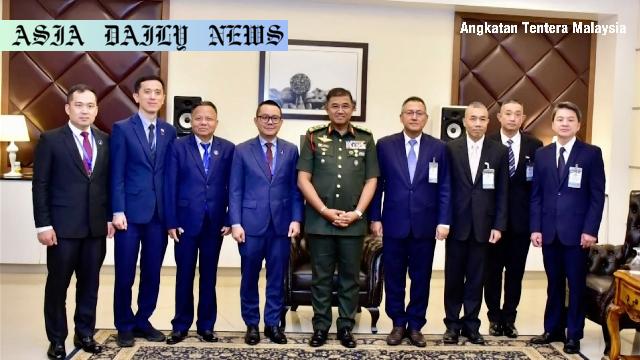Ceasefire: Thai and Cambodian defense officials begin discussions with ASEAN support to ensure peace in the border region.
Thai and Cambodian officials begin talks on ceasefire enforcement in Malaysia under ASEAN’s guidance.
ASEAN seeks to establish a third-party monitoring team to ensure both nations uphold the ceasefire agreement.
Disputes over detained Cambodian troops and ceasefire terms highlight challenges in negotiations.
Defense ministers and international representatives from the US and China are set to join discussions.

Introduction
On July 24, deadly clashes erupted between Thai and Cambodian forces along their disputed border, disrupting the fragile peace in the region. In the aftermath, Malaysia, acting in its capacity as chair of the Association of Southeast Asian Nations (ASEAN), intervened to broker a ceasefire. As the violence subsides, critical discussions are now underway among high-ranking defense officials from both nations. With support from ASEAN, Thailand and Cambodia aim to reconcile their differences and implement sustainable measures to maintain peace in the region.
ASEAN’s Role in Brokering Ceasefire
ASEAN has played a pivotal role in pushing for peaceful resolutions and fostering dialogue between the two nations. The four-day meeting, taking place in Malaysia, focuses specifically on maintaining and monitoring the ceasefire. ASEAN plans to create a third-party monitoring team tasked with ensuring the terms of the agreement are upheld by both Thailand and Cambodia. This intervention reflects ASEAN’s commitment to regional stability amidst growing tensions in Southeast Asia.
Key Issues at Stake
Despite the efforts toward peace, significant disagreements persist between Thai and Cambodian officials. Chief among these issues are the conditions for upholding the ceasefire and the handover of 18 Cambodian troops currently detained by Thai forces. Both nations continue to trade accusations, complicating the negotiation process. The presence of representatives from the US and China during the final day of talks highlights the international community’s interest in resolving the conflict. These nations are poised to provide a neutral perspective and perhaps mediate contentious points of disagreement.
Looking Ahead
As we move toward the final phases of the talks, questions remain about what tangible progress can be achieved. The defense minister-level meeting, scheduled for the final day, will be critical in setting the tone for subsequent efforts to stabilize the region. It is essential that all parties involved prioritize diplomacy and mutual understanding to avoid recurring conflict. Whether a lasting resolution is achieved or hostilities resume depends on the resolve of Thailand, Cambodia, and ASEAN.
Conclusion
The discussions between Thailand, Cambodia, and ASEAN illustrate the complexities of conflict resolution in contested areas. While the ceasefire is a positive step, the long-term solution will require continued vigilance, cooperation, and compromise from all parties. ASEAN’s proactive involvement underscores the importance of collective regional efforts in promoting peace and stability.
Commentary
ASEAN’s Role in Regional Peace
The ongoing discussions between Thailand, Cambodia, and ASEAN highlight the critical importance of regional organizations in maintaining peace and stability. ASEAN’s intervention demonstrates a commitment to addressing disputes diplomatically, avoiding escalation that could destabilize Southeast Asia. By creating a third-party monitoring team, ASEAN underscores the need for impartial enforcement mechanisms in implementing ceasefire agreements. This example showcases how international cooperation can mediate conflicts that otherwise seem intractable.
Challenges in Reaching Agreements
Despite the hopeful prospects for peace, the disagreements between Thai and Cambodian officials underline the challenges inherent in negotiation processes. Ancient territorial disputes and mistrust complicate efforts to find common ground. The situation is further strained by the detention of Cambodian troops, which Thailand views as a necessary precaution and Cambodia sees as an unjust act. Resolving these issues while maintaining mutual respect is key to building lasting trust between the two nations.
Broader Implications
The involvement of both the US and China in the defense minister-level talks is a testament to the global relevance of such conflicts. Both superpowers have vested interests in ensuring stability in Southeast Asia, a critical hub for trade and geopolitics. Their attendance also signals an opportunity for leveraging their influence to encourage compromise without aligning with either side. This multilayered framework of regional and global diplomacy offers a pathway to not only resolving this specific dispute but also establishing a model for handling similar conflicts worldwide.
Conclusion
In conclusion, the ceasefire talks between Thailand and Cambodia serve as a reminder of the importance of dialogue, diplomacy, and multilateral cooperation. ASEAN’s active role, coupled with support from international stakeholders, provides a beacon of hope for a peaceful resolution. However, patience and perseverance will be essential as all parties work through historical grievances and immediate concerns to create a stable future for the border region.


